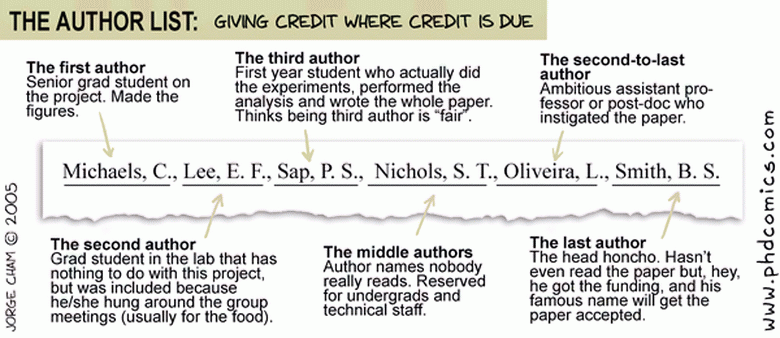 Image credit: phdcomis.com
Image credit: phdcomis.com
For entertaining purpose. Don't take this cartoon as a serious answer or generalization, just however it resembles pretty much my experience, especially the last 3 positions: the second-to-last, the last, and the middle one.
The first ones are not necessarily true. In my field (CS), the first name is still the most important one, normally a PhD student working on his own sub-problems towards his thesis; and having his name at the first place is important for his overall thesis evaluation.
When I have to review paper, I often frown upon papers with many authors, especially short papers. One extreme was a 4.5-page paper with 8 authors (gosh...)
To my experience of having read a lot of papers in the field, the most beautiful and important papers are normally the ones written by 2 authors, then papers written by only one author. Never seen a great one with 7 authors... ;)
Note: this experience may be different in other fields, for example my friend for once said that in his field (earth sciences), each part of the task is already a huge work (collecting 40GB of raw data (1 person), preprocessing it (1 person), sharing expertise on the configuration setting (1 person),...) and they all end up in the author list. For sure, anyone with contributions should be given credit, but in the case of my friend, perhaps an Appendix or Acknowledgement section seems more appropriate.

 Image credit: phdcomis.com
Image credit: phdcomis.com